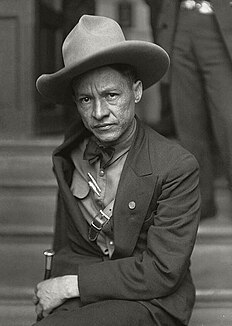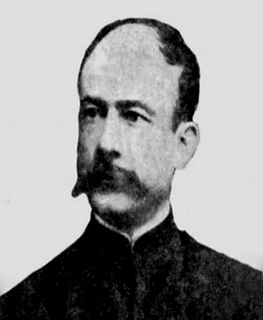
Nicaragua, officially the Republic of Nicaragua, is the largest country in the Central American isthmus, bordered by Honduras to the northwest, the Caribbean to the east, Costa Rica to the south, and the Pacific Ocean to the southwest. Managua is the country's capital and largest city. As of 2015, it was estimated to be the second largest city in Central America. The multi-ethnic population of six million includes people of mestizo, indigenous, European and African heritage. The main language is Spanish. Indigenous tribes on the Mosquito Coast speak their own languages and English.
Nicaragua is a nation in Central America. It is located about midway between Mexico and Colombia, bordered by Honduras to the north and Costa Rica to the south. Nicaragua ranges from the Caribbean Sea on the nation's east coast, and the Pacific Ocean bordering the west. Nicaragua also possesses a series of islands and cays located in the Caribbean Sea.

The Republic of Nicaragua v. The United States of America (1986) was a case where the International Court of Justice (ICJ) held that the U.S. had violated international law by supporting the Contras in their rebellion against the Sandinistas and by mining Nicaragua's harbors. The case was decided in favor of Nicaragua and against the United States with the awarding of reparations to Nicaragua.

The Sandinista National Liberation Front is a socialist political party in Nicaragua. Its members are called Sandinistas in both English and Spanish. The party is named after Augusto César Sandino, who led the Nicaraguan resistance against the United States occupation of Nicaragua in the 1930s.

The Reagan Doctrine was stated by United States President Ronald Reagan in his State of the Union address on February 6, 1985: "We must not break faith with those who are risking their lives—on every continent from Afghanistan to Nicaragua—to defy Soviet-supported aggression and secure rights which have been ours from birth." It was a strategy implemented by the Reagan Administration to overwhelm the global influence of the Soviet Union in the late Cold War. The doctrine was a centerpiece of United States foreign policy from the early 1980s until the end of the Cold War in 1991.

Anastasio Somoza García was the leader of Nicaragua from 1937 until his assassination in 1956. He was only officially the 21st President of Nicaragua from 1 January 1937 to 1 May 1947 and from 21 May 1950 until his assassination on 29 September 1956, ruling for the rest of the time as an unelected military strongman. He was the patriarch of the Somoza family, which ruled Nicaragua as a family dictatorship for 42 years.

Augusto C. Sandino, full name Augusto Nicolás Calderón de Sandino y José de María Sandino, was a Nicaraguan revolutionary and leader of a rebellion between 1927 and 1933 against the United States occupation of Nicaragua. Despite being referred to as a "bandit" by the United States government, his exploits made him a hero throughout much of Latin America, where he became a symbol of resistance to American imperialism. Sandino drew units of the United States Marine Corps into an undeclared guerrilla war. The United States troops withdrew from the country in 1933 after overseeing the election and inauguration of President Juan Bautista Sacasa, who had returned from exile.

Nueva Segovia is a department in Nicaragua. It covers an area of 3,491 km2 and has a population of 275,291. The capital is Ocotal.
This timeline of United States government military operations, based in part on reports by the Congressional Research Service, shows the years and places in which U.S. military units participated in armed conflicts or occupation of foreign territories. Items in bold are wars most often considered to be major conflicts by historians and the general public.

José María Moncada Tapia was the President of Nicaragua from 1 January 1929 to 1 January 1933.

Juan Bautista Sacasa was the President of Nicaragua from 1 January 1933 to 9 June 1936. He was the eldest son of Roberto Sacasa and Ángela Sacasa Cuadra, the former's cousin twice removed. He was a relative of Benjamín Sacasa.

Puerto Cabello is a city on the north coast of Venezuela. It is located in Carabobo State, about 210 km west of Caracas. As of 2011, the city had a population of around 182,400. The city is home to the largest and busiest port in the country and is thus a vital cog in the country's vast oil industry. The word 'cabello' translates to 'hair'. The Spaniards took to saying that the sea was so calm there that a ship could be secured to the dock by tying it with a single hair.

The United States occupation of Nicaragua from 1912 to 1933 was part of the Banana Wars, when the US military invaded various Latin American countries from 1898 to 1934. The formal occupation began in 1912, even though there were various other assaults by the U.S. in Nicaragua throughout this period. American military interventions in Nicaragua were designed to stop any other nation except the United States of America from building a Nicaraguan Canal.

USS Asheville, the lead ship in her class of two United States Navy gunboats, was the first ship of the United States Navy named for the city of Asheville, North Carolina. The ship was built at the Charleston Naval Shipyard of North Charleston, South Carolina, from her keel laying in June 1918, her launching in July 1918, and her commissioning in July 1920.

The Nicaraguan Air Force is the air defense branch of the armed forces of Nicaragua. It continues the former Sandinista air units. Before 1979 the Nicaraguan National Guard had some air units.

Rosario María Murillo Zambrana is a Nicaraguan politician and poet who has held the position of Vice President of Nicaragua, the country's second highest office, since January 2017 and First Lady of Nicaragua since 2007 as the wife of President Daniel Ortega. Murillo has served as the Nicaraguan government's lead spokesperson, government minister, head of the Sandinista Association of Cultural Workers, and Communications Coordinator of the Council on Communication and Citizenry. She was sworn in as vice president of Nicaragua on 10 January 2017. In August 2021, she was made subject to personal sanctions by the European Union, over alleged human rights violations.

The Battle of Ocotal occurred in July 1927, during the American occupation of Nicaragua. A large force of rebels loyal to Augusto César Sandino attacked the garrison of Ocotal, which was held by a small group of US Marines and Nicaraguan National Guards. Ultimately the rebels were defeated with heavy losses, while the Americans and their Nicaraguan allies suffered very light casualties.
The Nicaraguan Civil War of 1926–1927, or the Constitutionalist War, broke out after a coup d'état by Emiliano Chamorro, a member of the Conservative Party, removed Nicaragua's democratically elected government, resulting in a rebellion by members of the Liberal Party. The conflict came to an end after a military and diplomatic intervention by the United States resulted in the Pact of Espino Negro, which began the Peace of Tipitapa. Although the civil war came to an end, one Liberal general, Augusto César Sandino, refused to lay down his arms and waged the Sandino Rebellion against the Nicaraguan government and the US Marine Corps until 1933.
The Battle of Santa Clara took place on 27 July 1927, during the American occupation of Nicaragua of 1926–1933. After being ambushed by Sandinista forces at the Battle of San Fernando, Major Oliver Floyd's expedition of American Marines and Nicaraguan Provisional Guardsmen continued its advance into enemy-held territory in northern Nicaragua.

Blanca Stella Aráuz Pineda is the first National Heroine of Nicaragua. She was noted as a telegraphist who assisted the guerrilla forces during the United States occupation of Nicaragua and who negotiated with President Juan Bautista Sacasa to gain amnesty for the rebels and negotiate peace at the end of the conflict.
















